Many publications by Harvard Forest and affiliated researchers are available to purchase online.
Additional research publications, many of which are available to download, can be found in the Harvard Forest Bibliography.
John Hirsch chronicles the research, scientists, and ephemera of the Harvard Forest— Harvard University’s 4000-acre ecological laboratory and classroom in Petersham, Massachusetts. Essays by David Foster, Clarisse Hart, and Margot Anne Kelley provide a context regarding the Forest’s history and work that expand the scope of this photographic exploration at the nexus of science and art.
purchase online
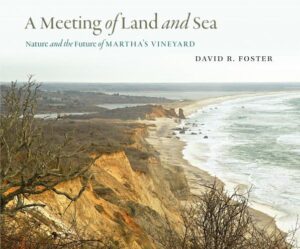
Full of surprises, bedecked with gorgeous photographs and maps, and supported by unprecedented historical and ecological research, this book awakens a new perspective on the renowned New England island Martha’s Vineyard. David Foster explores the powerful natural and cultural forces that have shaped the storied island to arrive at a new interpretation of the land today and a well-informed guide to its conservation in the future.
Two decades of research by Foster and his colleagues at the Harvard Forest encompass the native people and prehistory of the Vineyard, climate change and coastal dynamics, colonial farming and modern tourism, as well as land planning and conservation efforts. Each of these has helped shape the island of today, and each also illuminates possibilities for future caretakers of the island’s ecology. Foster affirms that Martha’s Vineyard is far more than just a haven for celebrities, presidents, and moguls; it is a special place with a remarkable history and a population with a proud legacy of caring for the land and its future.
purchase online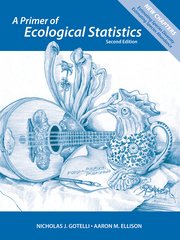
A Primer of Ecological Statistics explains fundamental material in probability theory and experimental design for ecologists and environmental scientists. The book is designed to serve as either a stand-alone or supplementary text for upper division undergraduate or graduate courses in ecological and environmental statistics, ecology, environmental science, environmental studies, or experimental design. The Primer also could be used for short-courses or workshops for conservation biologists, and environmental managers. The book emphasizes a general introduction to probability theory and provides a detailed discussion of specific designs and analyses that are typically encountered in ecology and environmental science. Topics include probability, statistical distributions, hypothesis testing, probability values, Bayesian analysis, experimental and sampling design, data archiving, regression, analysis of variance, categorical data, and multivariate analysis. A comprehensive glossary, a mathematical appendix on matrix algebra, and extensively annotated tables and figures are included.
Click here for data, code and errata for both editions of the Primer.
purchase online

With practical guidance, helpful tips, and informative overviews of each location, The Wildlife of New England invites you to discover more than 80 wildlife-viewing areas around New England. Organized by state, each viewing location is discussed in detail, including its natural habitats and their unique features, characteristic species to watch for and when to see them, and recommended trails, auto roads, and driving directions. The Wildlife of New England also offers informative introductions to 60 of the region’s iconic animals organized by their natural habitats and shown in stunning photographs, many in color.
purchase online

Researchers from around the world, led by HF Senior Ecologist Aaron Ellison, published a major scientific synthesis on the physiology, ecology, and evolutionary biology of carnivorous plants.
Until then, there had only been three major scientific treatments of what Charles Darwin called “the most wonderful plants in the world.” Darwin himself wrote the first one in 1875 (Insectivorous Plants), Francis Lloyd wrote the second in 1942 (The Carnivorous Plants), and Barrie Juniper et al. the third in 1989 (The Carnivorous Plants).
Oxford University Press is now publishing the fourth: Carnivorous Plants: Physiology, Ecology, and Evolution, edited by Aaron Ellison (Harvard Forest) and Lubomír Adamec (Institute of Botany of the Academy of Sciences of the Czech Republic). With contributions from Ellison, Adamec, and more than 50 other researchers from around the world, this volume is a state-of-the-art synthesis of the genomics, biochemistry, physiology, ecology, evolution, and conservation biology of the more than 800 species of carnivorous plants.
purchase online
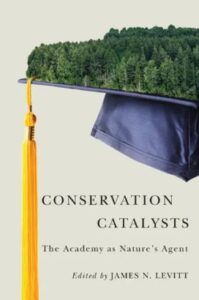
Twenty-first-century conservationists are contending with biodiversity loss on an unprecedented scale, compounded by the interrelated threat of climate change. These global challenges call for first-rate talent, highly sophisticated technology, and advanced financial and organizational tools that can be used across jurisdictional boundaries and professional disciplines. Academic institutions—from colleges and universities to research institutes and field stations—are surprisingly powerful and effective catalysts for integrating all these elements into strategically significant and enduring large landscape conservation initiatives. This edited volume gathers more than a dozen first-hand accounts of the long-term impacts academics are making on the ground, from the University of Nairobi to Harvard. With measurable results, their efforts are protecting wildlife habitat, improving water quality, building sustainable economies, and bettering public amenities around the world now and for centuries to come.
download PDF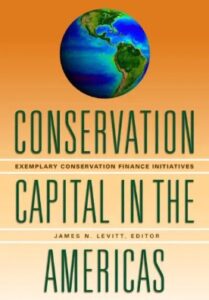
As the challenge of global climate change intensifies, environmentalists have called for redoubled efforts to preserve forests and ecosystems that are critical in balancing greenhouse gas emissions. Conservation finance is the subject of this volume, based on a conference held in January 2009 in Chile attended by more than 100 conservationists and policy makers, to consider methods to find financial capital – as well as human, social, and natural capital – to steward the earth’s resources for future generations. The volume details new approaches in conservation finance, from the art of conservation deal-making to the practice of sustainable development, that are being invented and implemented around the world.
purchase or download
This book is the first user-friendly regional guide devoted to ants—the “little things that run the world.” Lavishly illustrated with more than 500 line drawings, 300-plus photographs, and regional distribution maps as composite illustrations for every species, this guide will introduce amateur and professional naturalists and biologists, teachers and students, and environmental managers and pest-control professionals to more than 140 ant species found in the northeastern United States and eastern Canada.
find updated info and purchase online
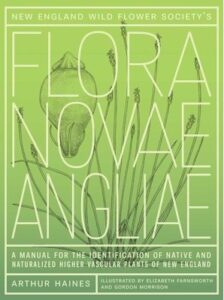
This comprehensive manual offers accurate, up-to-date, and clear information for identifying New England’s remarkable array of tracheophytes (vascular plants, excluding mosses). With fully researched entries on some 3,500 native and nonnative species, the book is the first in decades to provide a complete and correct botanical reference for the region’s noncultivated plants. The volume includes many new species not documented in New England before.
purchase onlineA Collection of Writings of Hugh Miller Raup, Bullard Professor of Forestry, Emeritus, Harvard University. Edited by Benjamin B. Stout with a fore- and afterword by Calvin W. Stillman.
download PDF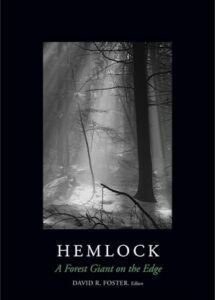
For millennia, Eastern Hemlock trees have held irreplaceable cultural value and created unique forest habitat across New England. Today, they are disappearing from our forests, falling by the tens of thousands as prey to an exotic insect foe. Drawing from a century of long-term studies at the Harvard Forest, the authors explore what hemlock’s modern decline can tell us about the challenges facing nature and society in an era of habitat fragmentation, climate change, and shifting human priorities. Historical accounts of foresters and ecologists over the past century provide insights into the tree’s importance and the nature of science itself.
purchase online
Forests in Time offers a unique look at combining history and science in ecological studies and environmental management and applies this approach to one of the most remarkably transformed landscapes in North America: the New England countryside. Written in accessible prose and profusely illustrated with photographs, maps, and graphs, the book relates the history of changes in New England and then explores the results of integrated studies and experiments in this largely forested landscape.
Download Forests in Time by chapter
purchase onlineThis special issue contains nineteen papers based on research led by the Harvard Forest. These articles are organized thematically into three sections: a series of case studies (10 papers) that apply historical-geographical approaches to a range of ecological questions and scales; a focused examination (5 papers) of the consequences of one historically important and unfortunately pressing ecological issue – the introduction of exotic pests and pathogens; and the application (4 papers) of historical geographical insights to major issues in conservation and land management.
download PDFs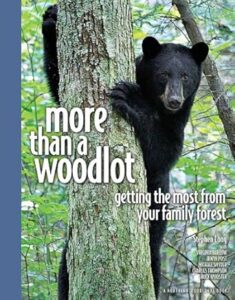
More Than a Woodlot: Getting the Most from Your Family Forest, by Harvard Forest Bullard Fellow Stephen Long, is an indispensible companion for landowners looking to take a more ecological approach to managing their woods.
From the book: “Whether you want to cut your annual firewood, see more wildlife, protect special places, sell timber, or plan for the future of your land, this book will be your trusty guide.”
purchase online
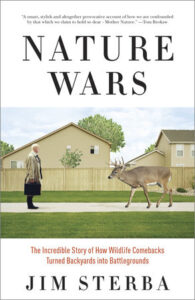
Nature Wars offers an eye-opening look at how modern Americans have lost touch with the natural landscape, spending 90 percent of their time indoors where nature arrives via television, films and digital screens in which wild creatures often behave like people or cuddly pets. All the while our well-meaning efforts to protect animals allowed wild populations to burgeon out of control, causing damage costing billions, degrading ecosystems, and touching off disputes that polarized communities, setting neighbor against neighbor. Deeply researched, eloquently written, counterintuitive and often humorous Nature Wars will be the definitive book on how we created this unintended mess.
purchase online
Over the past 300 years New England’s landscape has been transformed. The forests were cleared; the land was farmed intensively through the mid-nineteenth century and then was allowed to reforest naturally as agriculture shifted west. Today, in many ways the region is more natural than at any time since the American Revolution. This fascinating natural history is essential background for anyone interested in New England’s ecology, wildlife, or landscape. In New England Forests through Time these historical and environmental lessons are told through the world-renowned dioramas in Harvard’s Fisher Museum. These remarkable models have introduced New England’s Landscape to countless visitors and have appeared in many ecology, forestry, and natural history texts. This first book based on the dioramas conveys the phenomenal history of the land, the beauty of the models, and new insights into nature.
purchase online

Without replication, the trustworthiness of scientific research remains in doubt. Although replication is increasingly recognized as a central problem in many scientific disciplines, repeating the same scientific observations of experiments or reproducing the same set of analyses from existing data is remarkably difficult. In this important volume, an international team of biologists, philosophers, and historians of science addresses challenges and solutions for valid replication of research in medicine, ecology, natural history, agriculture, physiology, and computer science.
After the introduction to important concepts and historical background, the book offers paired chapters that provide theoretical overviews followed by detailed case studies. These studies range widely in topics, from infectious-diseases and environmental monitoring to museum collections, meta-analysis, bioinformatics, and more. The closing chapters explicate and quantify problems in the case studies, and the volume concludes with important recommendations for best practices.
This timely collection of essays, written by recognized forestry and environmental specialists, tells the story of the conservation, use, and changes in Massachusetts’ forests over time. It begins with ecology and land-use history through pre-settlement, colonial, and post-Revolutionary periods, and ends with recommendations on how history may inform policy. It documents the origin and growth of state forestry programs and underscores the importance of private and local leadership and Massachusetts’ roles in the emergence of national conservation and forestry efforts. Economic contributions and educational programs are detailed. The book concludes with a call to awaken and reinvigorate the historical connection between citizens and their forests, an initiative of potential significance not only to Massachusetts but to the nation.
download PDF
Insights into the conservation and ecology of the New England Landscape based on an interpretation of its history, using as a source the journal writings of Henry David Thoreau.
Part ecological and historical puzzle, this book brings a vanished countryside to life in all its dimensions, human and natural, offering a rich record of human imprint upon the land. Extensive excerpts from the journals show us, through the vividly recorded details of daily life, a Thoreau who was intimately acquainted with the ways in which he and his neighbors were changing and remaking the New England landscape. Foster adds the perspective of a modern forest ecologist and landscape historian, using the journals to trace themes of historical and social change.
purchase online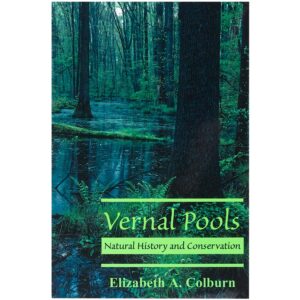
Vernal pools are small woodland ponds that are flooded in springtime by melting snow and rainfall. They range from seasonal pools that contain water for only a few months in spring, to semi-permanent ponds that dry up only occasionally. Vernal pools provide habitat for a host of animal species that do not occur in permanent waters where there are fish as predators. The kinds of animals found in a given pool vary depending on how long water is present, and different species have different strategies for surviving when the pools are dry. Hundreds of thousands of terrestrial amphibians that live in the woods migrate to vernal pools early each spring to breed, and a wide variety of crustaceans, mollusks, aquatic insects, and other invertebrates complete their life cycles in these tiny aquatic ecosystems.
purchase online
Peter Del Tredici’s lushly illustrated field guide to wild urban plants of the northeastern United States is the first of its kind. While it covers the area bounded by Montreal, Boston, Washington, D.C. and Detroit, it is broadly applicable to temperate urban environments across North America. The book covers 222 species that flourish without human assistance or approval. Rather than vilifying such plants as weeds, Del Tredici stresses that it is important to notice, recognize, and appreciate their contribution to the quality of urban life. Indeed their very toughness in the face of heat islands, elevated levels of carbon dioxide and ubiquitous contamination is indicative of the important role they have to play in helping humans adapt to the challenges presented by urbanization, globalization and climate change.
The species accounts—158 main entries plus 64 secondary species-feature descriptive information including scientific name and taxonomic authority, common names, botanical family, life form, place of origin, and identification features. Del Tredici focuses especially on their habitat preferences, environmental functions, and cultural significance. Each entry is accompanied by original full-color photographs by the author which show the plants’ characteristics and growth forms in their typical habitats. Wild Urban Plants of the Northeast will help readers learn to see these plants-the natural vegetation of the urban environment-with fresh appreciation and understanding.
purchase online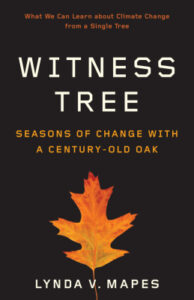
In the life of this one grand oak, we can see for ourselves the results of one hundred years of rapid environmental change. It’s leafing out earlier, and dropping its leaves later as the climate warms. Even the inner workings of individual leaves have changed to accommodate more CO2 in our atmosphere.
Climate science can seem dense, remote, and abstract. But through the lens of this one tree, it becomes immediate and intimate. In Witness Tree, environmental reporter Lynda V. Mapes takes us through her year living with one red oak at the Harvard Forest. We learn about carbon cycles and leaf physiology, but also experience the seasons as people have for centuries, watching for each new bud, and listening for each new bird and frog call in spring. We savor the cadence of falling autumn leaves, and glory of snow and starry winter nights. Lynda takes us along as she climbs high into the oak’s swaying boughs, and scientists core deep into the oak’s heartwood, dig into its roots and probe the teeming life of the soil. She brings us eye-level with garter snakes and newts, and alongside the squirrels and jays devouring the oak’s acorns. Season by season she reveals the secrets of trees, how they work, and sustain a vast community of lives, including our own.
The oak is a living timeline and witness to climate change. While stark in its implications, Witness Tree is a beautiful and lyrical read, rich in detail, sweeps of weather, history, people, and animals. It is a story rooted in hope, beauty, wonder, and the possibility of renewal in people’s connection to nature.
purchase online